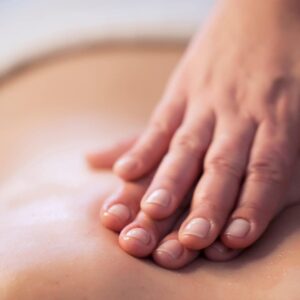
Traveling is amazing, right? New places, cool experiences, and unforgettable memories await! But let’s be honest, the journey itself can be pretty rough, especially if you’re stuck on long flights or crammed into tight spaces. After all that sitting, your body might be feeling like it needs a little extra TLC. That’s where getting a post travel massage can work wonders! In this article, we’ll dive into why post-travel massages are fantastic, especially for saying goodbye to that pesky low back pain and other travel-related discomforts.
The Not-So-Comfy Side of Sitting
You know those airports and airplanes where you spend what feels like forever just sitting? Yeah, we’ve all been there! But guess what? All that sitting can leave your back feeling less than happy. Low back pain is like the uninvited guest of long journeys, and it’s just no fun! Sitting for hours can lead to tense muscles, bad posture, and even poor circulation. Ouch!
Giving Low Back Pain the Boot
Worry not! A massage after your adventures is like a superhero swooping in to save the day! Skilled massage therapists know just what to do to target those tight and tense muscles from all that sitting. Kneading, stretching, and some deep tissue magic can bring back the smiles to your lower back, promoting relaxation and flexibility like never before.
Revving Up Circulation and Muscle Love
While travel can be fantastic, it’s true that staying in one spot for so long can slow down your body’s circulation. And that’s where massages come to the rescue yet again! A well-done massage gets your blood flowing like a river, carrying all the good stuff your body needs to feel its best. Those cranky muscles will get the nutrients and oxygen they’ve been craving, and you’ll feel refreshed and ready to conquer the world!
Bidding Adieu to Jet Lag
Jet lag, we all know it, we all dread it! Crossing time zones can mess up your sleep routine, leaving you feeling like a walking zombie. But hold on tight! A post-travel massage can help you battle jet lag like a champ! The magic touch of a skilled massage therapist boosts those feel-good hormones, like serotonin and melatonin, helping you get back on track with your sleep-wake cycle. Say goodbye to grogginess and hello to an energized you!
Unwinding Stress and Embracing Bliss
Let’s be real—traveling can get pretty stressful. From packing to navigating airports, there’s a lot on your mind. But here’s a little secret: massages are not only about making your body feel good; they also do wonders for your mental well-being! A good massage releases those lovely endorphins that lift your spirits and melt away stress. So, after your massage, you’ll find yourself feeling relaxed, focused, and ready to embrace all the adventures your destination has to offer!
The Ultimate Travel Enhancement
Who wouldn’t want to make their travel experience even more awesome? By treating yourself to a post-travel massage, you’re making sure your body and mind are in top-notch shape for all the fun and excitement ahead. No more worries about sore muscles or feeling drained! You’ll be more than ready to make the most of your journey and create memories to cherish forever.
Travel TLC: Beyond Massage
While massages are super cool, there are other things you can do to pamper yourself after a trip. Stretching during layovers or breaks can loosen up those tight muscles. Staying hydrated, eating good food, and getting some well-deserved rest are all part of the self-care package!
Book Your Post Travel Massage
Traveling is a blast, but we can’t deny that it takes a toll on our bodies. Low back pain and other travel discomforts are no match for the power of a post-travel massage! So, after your next adventure, remember to give yourself some love and care. A massage will not only wave goodbye to your aches but also boost your mood and make you feel like a superstar. Get ready to embrace your journey with open arms, feeling refreshed and ready to create beautiful memories along the way! Happy travels!

